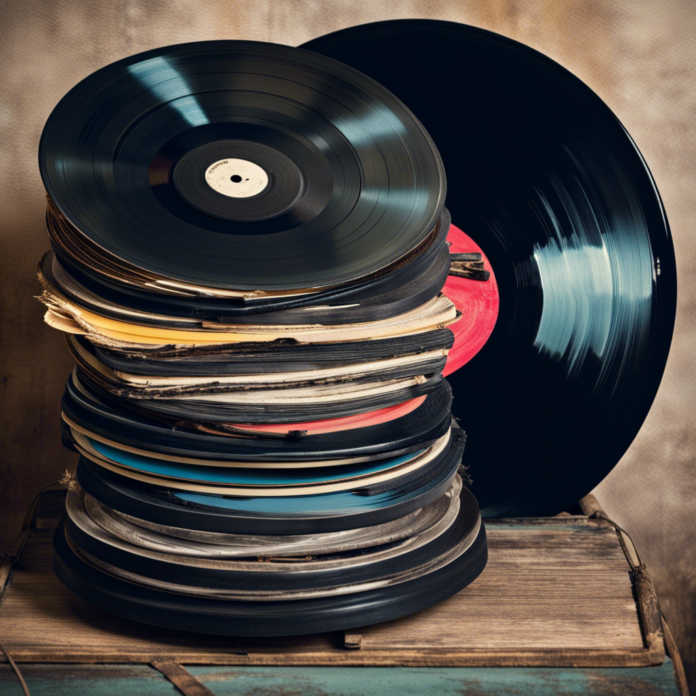The 1960s and 70s represent the pinnacle of vinyl records’ prominence in music and popular culture. This transformative era saw vinyl transcend its physical medium role to become a symbolic cultural touchstone. Iconic vinyl releases alongside the rise of the youth counterculture movement, hi-fi equipment, and expansive album artwork made vinyl collectible, revolutionary and larger than life. Let’s explore the many factors that constructed vinyl’s mythic golden era.
The Rise of Rock on Vinyl
The early rock n’ roll of the 1950s pioneered by artists like Chuck Berry, Little Richard and Elvis Presley had typically been released on 7” 45 RPM singles. But as rock progressed through the 1960s, groups like The Beatles and Rolling Stones helped establish the LP album format as the creative canvas for groundbreaking rock works.
Concept albums like The Who’s Tommy generated media frenzy and proved rock could inspire profound cultural conversations. Psychedelic and progressive rock trends expanded songs into sprawling artistic statements stretching across multiple sides. Vinyl’s expanded capacity let albums become fully immersive musical journeys.
Stereo Fidelity in Hi-Fi Systems
Prior to the late 1960s, consumer audio equipment emphasized portability and affordability over fidelity. But a new class of components transformed the listening experience – high fidelity stereo systems.
Dedicated turntables, pre-amplifiers, receivers, and speakers became affordable for middle-class buyers. This equipment revealed the nuances of musical stereo recordings with stunning presence. Records mastered for these detailed systems offered an unparalleled immersive experience. The high fidelity market exploded alongside vinyl sales.
Lavish Gatefold and Pop-up Album Covers
Alongside musical innovation, records evolved into elaborately packaged objets d’art. Gatefold covers opened to reveal photography, liner notes, and lyrics. Pop-up and multi-panel sleeves turned albums into collectible artifacts.
Iconic cover art like Pink Floyd’s Dark Side of the Moon, The Beatles’ Sgt. Pepper, and Led Zeppelin’s Physical Graffiti became eternally linked to the music within. Vinyl’s expanded 12” sleeve canvas motivated visual creativity that deepened listener connection.
The Counterculture Movement
Overlapping with vinyl’s rise was its close affiliation with 1960s and 70s counterculture. Youth rebelling against conservative mores embraced rock albums that spoke to anti-war sentiments and freer lifestyles.
Records served as revolutionary manifestos for change. Artists like Bob Dylan and The Grateful Dead gave a voice to restlessness and idealism. Possession of certain albums could define one’s social identity. Vinyl soundtracked a generation’s searing social awakening.
Underground and Bootleg Records
Vinyl’s role in counterculture extended beyond major label releases. Bootleg records of unauthorized live concerts and obscure recordings catered to true fans. Underground niche communities traded rare records as precious communal artifacts.
Anti-establishment labels like ESP-Disk released radical jazz, folk and freak-out albums at the fringes of culture. Collector passion for esoteric vinyl artifacts blossomed as objects of identity and self-expression. Record stores and head shops became hangouts for music discovery.
The DJ and Mixing Culture
Spurred by disco and the pioneering DJs of 70s New York block parties, the craft of dance music mixing exploded.DJs overlayed and blended tracks from multiple turntables to extend rhythms and song transitions. This spawned remixing and turntablism techniques using vinyl manipulations like scratching and beat juggling.
Records evolved into dynamic sound sources. DJs demonstrated new creative possibilities through live re-contextualization. Mixing culture cemented vinyl’s role in pioneering musical innovations that reverberate today.
Crate Digging in Used Record Stores
Cratedigging became a respected musical pastime as sampling sources and beloved albums were unearthed in dusty used record store bins. Rare soul, jazz and funk discoveries found new relevance through DJ mixing.
Obsessive collectors aimed to unearth eclectic musical gems across ever-wider genres. The thrill of crate digging helped position vinyl as a boundless artform to continually explore.
Vinyl’s Sonic Distinction
A key enduring factor underlying vinyl’s resonance were the format’s inherent sonic characteristics. The warm crackles and pops of vinyl playback emphasized its tangible, imperfect human qualities compared to slick digital music.
Turntable nuances like pitch wobble added expressiveness missing from sterile CDs. Vinyl’s sound felt alive and interactive. Later digital formats achieved clinical perfection and convenience, but failed to replicate vinyl’s emotive experience.
Through this combination of culture, content and medium, vinyl in the 60s and 70s ascended from mere musical format into a full-fledged counterculture identity. For generations, it shaped both personal memories and broader cultural momentum – the effects of which endure even amidst music’s digitization. The era’s mythic status lives on because it spoke to timeless desires for connection, expression and meaning.
